So—what in the sam-heck are “zines”?
“Zines” are typically** defined as do-it-yourself (DIY) publications. (By the way, it’s pronounced zeeeeeeeen.) Those who create them are often called zinesters. What distinguishes zines in general is the personal nature of the content, whether the subject matter be diaristic or political.
Zines can be on pretty much any topic, but the most popular types include:
fanzines
perzines, or “personal” zines
political/activist zines
music zines
art zines
zines about health, sex, travel, comics, religion, and/or literature
The most common and traditional definition of a zine is a self-published, black-and-white photocopied booklet.** The number of copies is usually determined by the resources available. Historically, zines have been made by hand—the pages typed, drawn, written, collaged, glued, and taped—and then reproduced on a photocopier.
Today, most zines are still made by hand but may be scanned and printed at home. Some zinesters now make zines via desktop publishing while many continue to work in analog environments. Other zinesters work in both digital and analog environments. These days, are are tons of ways to make and print a zine, including a digital printing software, riso-graph machines, and offset printing at a print shop. Zines can come in every color, shape, binding, and size!
The important thing is that they are shared.
**Definitions of zines vary widely, even between individual zinesters! It’s important not to gatekeep or restrict, so long as they remain self-published, reproduced, and easily shared!
How do people find/share zines?
Pre-Internet, people exchanged zines via the postal service. Zines were also shared and traded amongst bands, fans, and concert-goers in local music and art scenes, including major US citites like New York, Chicago, Washington D.C., Portland, Los Angeles, Philadelphia, Pittsburgh, and more!
More recently, zinesters sell or trade them in person at zine fairs or sell them through "distros" (distributors) in stores or online. The more they cost to make, the higher the sale price. In the 1980s and 1990s, zinesters would make "free" copies at work or go to "Kinko's" to copy in black and white cheaply. Zinesters are now more likely to print at home and print in color. They are also more likely to sell their zines than to just trade. Kinko's is no longer, but FedEx and Staples are still destinations for photocopying. Local print shops also come in handy!
Where did zines come from?
Zines have a loooong history in the United States. They trace their origins to the alternative press cultures of the 18th and 19th centuries, including pamplets, little magazines, and religious tracts. In fact, zine editor Gene Mahoney calls Thomas Paine's revolutionary pamphlet Common Sense “the zine heard 'round the world,” due to its political nature. Other writer-activists like Mary Wollstonecraft and Ida B. Wells penned political pamphlets to raise awareness about women’s rights and the anti-lynching movement, respectively.
Harlem Renissance writers like Langston Hughes and Zora Neale Hurston also contributed to “little magazines” documenting black life, culture, literature, and history in the early 20th century, particuarly during the Jim Crow era and the Great Migration.
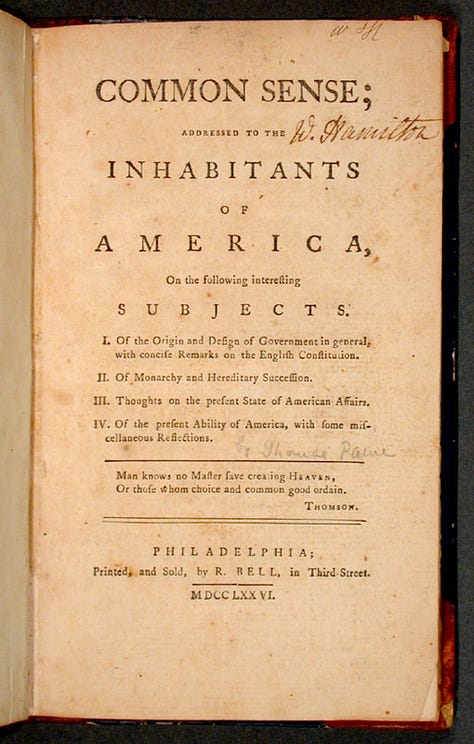
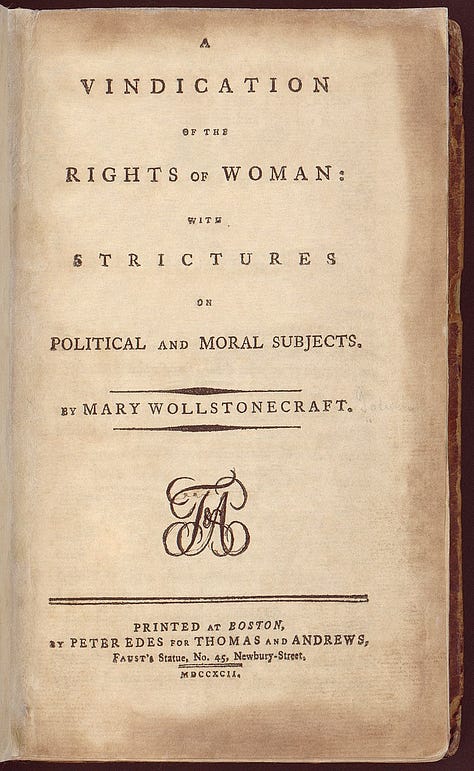

The term “zine” specifically refers to the science fiction “fanzines” of the 1930s. These publications were created by fan clubs and featured self-published science-fictional stories and meta-commentary. (So, the tumblr of the 1930s, I guess!)
Throughout the 20th century, zines continued to evolve as a medium across various communities, cities, and sub-cultures. Self-publishing and alternative presses were born out of the need for marginalized communities to communicate with each other, as well as educate, entertain, and share important resources. In particular, zines were favored by feminists (e.g. Riot Grrrl), punks, musicians, artists, small press publishers (e.g. City Lights), the Black Panthers, LGBTQIA+ folks, and labor unions.
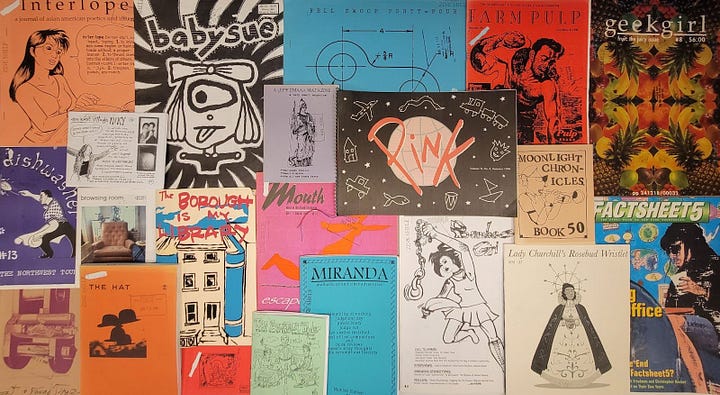
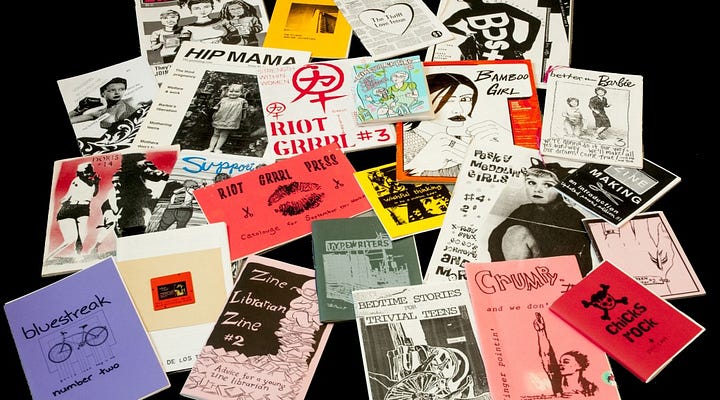
Why zines now??
Zines blew up on the Internet. The last thirty years have seen a massive uptick in the making, sharing, and distribution of zines in the digital landscape. Zine libraries and collections have cropped up all across the world. Entire academic disciplines study zines as pedagogical objects and embodied, archived materials. There are museum exhibits dedicated to the history of zines.
In particular, members of Gen Z are increasingly interested in every aspect of zine culture. It makes a lot of sense, if you think about it. Gen Z is exhausted by (& addicted to) the endless barrage of digital content and minutiae. Our growing interest in zines and analog culture is more than a nostalgic call-back to long-lost moments of of yesteryear. We need the sort of community zine culture breeds. We trace our activist roots to the political zines our Gen X parents and professors made. We thrive in the self-publishing and DIY landscapes, thanks to our social media-driven upbringing. Zines are more popular now than ever.
As our friends at
would say, Zines. Are. The. Future.Further Substack Reading
I’m not the first, nor the last, Substacker to trace the history, origins, and varied definitions of zines. There are so many who have already done a better job of it! Here are some newsletters, articles, and zinesters you should check out.
‘Til Next Time!
On the next edition of The Zine-O-Sphere, we’ll talk all things zine fests, zine libraries, and zine distros 😎 For now, I will leave you with a question to ponder—
Do you have a favorite pre-2000s zine or pamphlet? Let me know yours in the comments below!
Mine is Willpower, a Replacements fanzine series from the 80s by none other than Bill Callahan of Smog :)
The Zine-O-Sphere is your hub for all things zines, including books, libraries, digital collections, festivals, distros, workshops, and of course, individual zinesters and their incredible work. My hope is that by sharing these resources more widely, more folks will find their way to the wonderful world of zines.

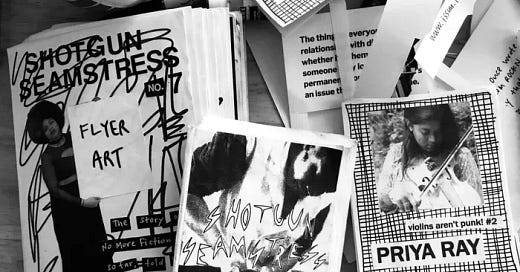




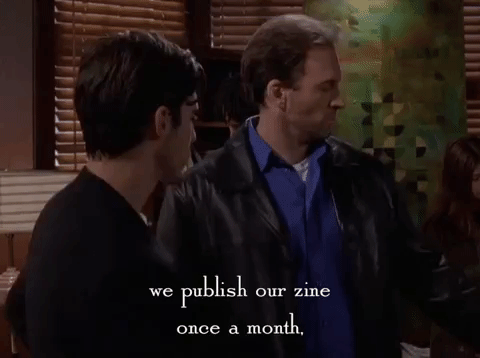




!!! Thanks so much for the shout-out, this write-up was wonderful. Feeling very encouraged by the zine culture brewing here on the stack 🤝💛
As a teen in the late 90s, I used to buy a Blondie fanzine from someone who made them here in the UK. My sister co-created a Kula Shaker fanzine with a friend, too.